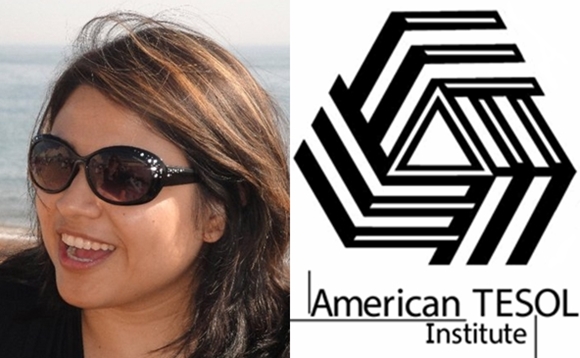The physical environment in which students learn can profoundly impact their engagement, motivation, and success. For TESOL teachers, transforming a classroom into an inviting, functional, and stimulating learning space can make a difference in language acquisition. This article explores practical and creative strategies for enhancing physical learning environments, helping TESOL teachers create spaces that invite curiosity, foster collaboration, and support diverse learning needs.
1. Flexible Seating: Creating Comfort and Choice
Flexible seating options can transform the classroom into a space that caters to various learning styles. Traditional desks in rows may not suit every lesson or learner. By incorporating a mix of seating options—such as small group tables, floor seating with cushions, and quiet zones with single chairs—teachers offer students the freedom to choose their preferred learning environment. For instance, some students may find that working in a quiet area aids focus, while others prefer collaborative seating. Flexible seating also encourages movement, making the learning experience dynamic and active.
Tip: Include lightweight, movable furniture that students can easily rearrange for different activities. Adding floor mats, bean bags, or even standing desks gives students the opportunity to work in positions that keep them comfortable and focused.
2. Visual Language-Rich Environments
Language learners thrive in environments filled with visual cues that reinforce vocabulary, grammar, and cultural references. Transforming classroom walls into educational landscapes with posters, word walls, and language boards can significantly boost retention. For TESOL classrooms, thematic walls can highlight different language concepts—such as vocabulary clusters, verb tenses, or cultural maps—helping students immerse themselves in English both consciously and subconsciously.
Tip: Update wall displays regularly to reflect current topics or seasonal themes. Interactive displays, such as a “word of the day” or “idiom corner,” encourage students to engage with the material on a daily basis.
3. Creating Collaborative Zones for Group Work
Language learning often flourishes through collaboration, so it’s beneficial to set up areas specifically for group activities. Designating spaces for pair or group work encourages students to practice speaking and listening skills in a relaxed setting. Group tables or collaborative zones with a whiteboard nearby enable students to brainstorm and solve problems together, giving them more opportunities to speak, listen, and learn from one another.
Tip: Equip collaborative zones with markers, sticky notes, or tablets for interactive activities. These areas can be designed as flexible zones that students know are for open discussion, role-playing, or project-based learning.
4. Designated Quiet Zones for Focused Learning
While collaboration is crucial, language learners also need quiet spaces for focused tasks such as reading, writing, and reflection. Creating a designated quiet zone in the classroom, complete with cozy seating and minimal distractions, allows students to concentrate on assignments or personal study. Quiet zones work especially well for tasks that require deeper focus, such as essay writing or reading comprehension exercises.
Tip: Soft lighting, floor pillows, and noise-reducing headphones can make quiet zones feel inviting. Let students know these areas are specifically for solo study to respect those who need focus.
5. Incorporating Technology-Enhanced Learning Stations
Incorporating technology into the learning environment can enhance language acquisition by making lessons more interactive and accessible. Setting up stations with tablets, laptops, or interactive whiteboards allows TESOL teachers to integrate digital learning tools, such as language apps, pronunciation software, or online reading materials. For students, these tech-enhanced stations provide a chance to practice English skills independently and with immediate feedback, helping them advance at their own pace.
Tip: Use technology stations for activities like listening to native English speakers, practicing vocabulary with digital flashcards, or participating in virtual English conversations. Rotate students through these stations during class to ensure everyone benefits from the technology.
6. Cultural Corners: Bringing the World into the Classroom
For TESOL teachers, language learning goes hand in hand with cultural understanding. Creating a “cultural corner” in the classroom can help students connect language to real-world contexts. This area might feature photos, artifacts, or books from English-speaking countries, giving students a tangible connection to the cultures they are studying. A cultural corner can also include information on local events, traditions, and customs, making it a space where students can explore global perspectives and celebrate diversity.
Tip: Regularly update your cultural corner with items relevant to upcoming holidays, local events, or cultural themes. Engage students by inviting them to bring items or pictures from their own cultures to share, fostering cross-cultural exchange.
7. Utilizing Whiteboards, Chalkboards, and Writable Surfaces
Writable surfaces, like whiteboards or chalkboards, are essential in TESOL classrooms for interactive language exercises. These surfaces allow teachers to illustrate sentence structures, build vocabulary lists, or create grammar visuals that can be updated and erased easily. In addition, providing writable surfaces for students encourages them to actively engage with language by writing out words, phrases, or responses during interactive lessons.
Tip: Writable surfaces can be used as language practice stations, where students work together to solve grammar exercises, practice spelling, or translate sentences into English. Writable tables or small whiteboards can also be placed in collaborative zones to support group work activities.
8. Environmental Awareness: Sustainable Learning Spaces
For TESOL teachers who wish to create environmentally friendly classrooms, there are several sustainable choices that benefit both students and the planet. Using natural lighting, reducing paper waste with digital resources, and incorporating plants into the classroom can create a healthy, eco-conscious environment. Research has shown that natural lighting and greenery help improve focus and reduce stress, fostering a more productive learning atmosphere.
Tip: Consider using recycled or reusable materials in classroom decorations and activities. Encourage students to respect the space by setting up recycling bins and promoting environmental awareness as part of your language lessons.
9. Sensory Elements for a Calm, Focused Atmosphere
Creating a calming, focused environment with sensory elements—such as soft lighting, soothing colors, or subtle background music—can make a classroom feel more inviting and supportive. Sensory considerations can help reduce anxiety, which is especially beneficial for language learners who may feel nervous speaking a new language. Simple touches, like using warm lighting or playing soft music during independent work times, create a welcoming atmosphere that encourages students to relax and participate.
Tip: Use flexible lighting to adjust brightness for different activities, and consider scents like lavender to create a calming effect. Additionally, allow students to take short breaks if they feel overwhelmed, respecting their unique needs as learners.
10. Personalized Spaces for Student Belongings and Contributions
Giving students a sense of ownership over their learning environment fosters pride and engagement. Consider dedicating a wall or board to student achievements, class projects, or shared goals. Allowing students to display their work or participate in creating classroom decorations personalizes the space, making it feel like a shared environment that belongs to everyone.
Tip: Allow students to have personal storage spaces for their materials, or a bulletin board where they can post individual projects or group work. Personal touches like these make the classroom feel more inclusive and create a positive, motivating atmosphere.
Conclusion: The Power of an Engaging Physical Learning Space
A well-designed learning space can make a world of difference in how students engage with the material and interact with each other. By transforming classrooms into inviting, flexible, and stimulating environments, TESOL teachers provide students with the tools they need to succeed and the motivation to keep learning. As language acquisition involves both cognitive and social processes, creating a physical environment that meets these needs fosters a deeper connection to the material and encourages active participation. For TESOL teachers, the benefits of designing an engaging learning space are immeasurable—it helps students feel at home in their learning journey and opens doors to endless possibilities for growth.
- Enroll TESOL Certification
- Watch TESOL Webinars



